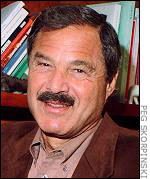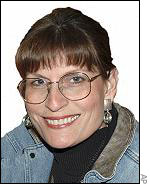By Seamus McGraw
.jpg) |
| Scott Dyleski, 2005 yearbook |
Contra Costa County, CA. (Crime Library)
In the hours after accused teen killer Scott Dyleski was arrested and charged with murder in the bludgeoning death of Pamela Vitale, a chillingly familiar picture of the young man began to emerge in the press.
Reports published in the San Jose Mercury News and the San Francisco Chronicle depicted the 16-year-old as a morbid loner drawn to the self-indulgently macabre masquerade of the Goth culture.
.jpg) |
| Scott Dyleski, 2004 yearbook |
They painted a portrait of a once-cheerful youth who spiraled into a deep depression and isolation after the death of his sister three years ago in an automobile accident. In a widely circulated recent photograph, Dyleski peers with dark eyes — outlined apparently in Marilyn Manson mascara — through a nest of long, unkempt hair. He's dressed in black and it has been reported that among his most prized possessions was the kind of black trenchcoat worn by teen killers like Dylan Klebold and Eric Harris at Columbine High School, and more recently, by Jeffrey Weiss, who gunned down 10 people at Red Lake High School in Minnesota.
In short, the image of Dyleski that has appeared in the media is an almost iconographic representation of the mythical predatory teen and as such, it taps into the popular psyche.
But juvenile justice experts warn that the popular image of the black-clad teen killer may have little to do with the reality of Dyleski's case and even less to do with the reality of juvenile crime in America.
The investigation of Dyleski's alleged role in the slaying of the 52-year-old wife of defense attorney and television pundit Daniel Horowitz is continuing and the details of the slaying remain a closely guarded secret among law enforcement officials in Contra Costa County. But this much is clear: "This is not a typical juvenile crime," said Robert Schwartz, the executive director of the Philadelphia-based Juvenile Law Center.
In fact, if Dyleski, who is accused of beating Vitale to death, striking her 39 times with a piece of crown molding at her home on a remote 12-acre estate in Lafayette, California, is found guilty, his crime will be highly unique among juvenile offenders, Schwartz says.
 |
| Franklin Zimring |
Franklin Zimring, a professor of law at the University of California at Berkeley and a nationally recognized expert on juvenile crime, agreed.
"I don't know what happened in the Lafayette case and it is atypical enough...that I'm waiting for the other shoes to drop," Zimring told Crime Library. The way Zimring sees it, the image that has emerged of Dyleski seems to draw heavily on a kind of mythic representation of the youthful offender. But it is an image that has more to do with widespread public fear than with the reality of juvenile crime.
While killers like Klebold and Harris and Weiss may have captured the public's imagination, "I can tell you this, the percentage of juvenile killers in black trenchcoats with Marilyn Manson music is quite low," Zimring said.
In fact, despite decade-old dire warning of an emerging threat from teen predators, dubbed "super-predators" by the media, the number of homicides committed by juveniles has declined dramatically over the past decade. A report by the federal Bureau of Justice Statistics bears that out. According to the report, the juvenile homicide rate fell between 1994 and 1998 to its lowest rate in 20 years and has remained at that near-historic low ever since.
Still, the image of the black trenchcoated killer continues to haunt the media. And perhaps one of the key reasons for that, said several experts, is that the media, and by extension the public, is conditioned to seek out that image, and the cases that receive the most attention are the ones that fit the profile.
 |
| Elizabeth Cauffman |
As Elizabeth Cauffman, a professor of psychology at the University of California-Irvine and an expert in juvenile delinquency issues, put it, "in the grand scheme of things, most juvenile crime does not represent...this kind of pattern." But they get the majority of the media attention, she said. What's more, she said, "whether you take Columbine or Red Lake or this particular incident...when you put somebody's life under a microscope, of course you're going to find these things...and I'm sure if you did this to anybody's life, you could find something to make a story and I think that's what happens in a lot of these cases."
What makes the allegations against Dyleski even more unique is the nature of the victim. According to federal statistics, when a juvenile does commit a homicide, it involves a firearm and in most cases, the victim is another teen. As Zimring put it, "in most juvenile crime, when you take a look at the victims, they match the offenders. It's a male, and if the shooter is 16 the shootee is 17."
 |
| Pamela Vitale |
The way Zimring sees it, if Dyleski is found guilty of murdering Vitale, he would become a statistical aberration within a statistical anomaly. But before he can even begin to decide whether that's the case, Zimring said, he's going to have to know a lot more about the circumstances of the killing than authorities have let slip so far.
"The public data that we're dealing with here tells such a puzzling story that I'm waiting until we hear more," Zimring said. "There's more story here than I think either you or I have, so I'm just gonna stay tuned."
Contact Seamus McGraw at seamusm@ptd.net

 default
default increase
increase decrease
decrease.jpg)
.jpg)



 email
email print
print

